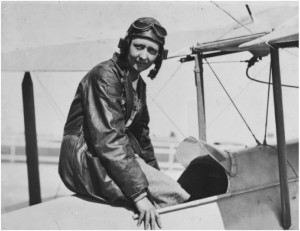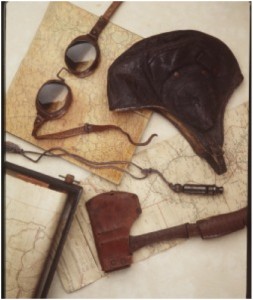We hear a lot about showing and not telling, but lately I’ve been thinking about it in a new way.
I’ve been taking a masterclass with Mary Stewart – not, unfortunately, in person, as she is 97 and not gadding about much anymore (isn’t it great to know she’s still alive?). No, I have been re-reading her books. Specifically, her romantic suspense novels.
I first read these books as a teenager. Loved them then, love them now. Later, I found her Arthurian (Merlinian) series, which begins with the magnificent The Crystal Cave, and which strongly influenced my own approach to fantasy writing. Nowadays, she is best known for these books.
But for most of her writing career, her suspense novels were her mainstay. She wrote 15 of them, starting with Madam, Will You Talk? in 1954 and ending with Rose Cottage in 1997. Along the way she also wrote children’s novels and poetry.
Two things stand out for me about Mary Stewart’s suspense novels. The first is the description. She has an extraordinary, detailed knowledge of plants and ecosystems. There is never a casual reference to ‘flowers blooming’. No, she tells you exactly what flowers are blooming (in an Alpine pasture):
The grass was thick with familiar meadow flowers – harebells, thyme, eyebright, and, where the scythe had not yet passed, the foaming white and yellow of parsley and buttercups.
Or, on a Greek island:
After the dappled dimness of the wood, it took some moments before one could do more than blink at the dazzle of colour. Straight ahead of me an arras of wisteria hung fully fifteen feet, and below it there were roses. Somewhere to one side was a thicket of purple judas-trees, and apple-blossom glinted with the wings of working bees.
Her books are often set in ‘exotic’ locations: Provence, Damascus, Greece (both mainland and islands), Austria, the Scilly Isles. And I could easily be persuaded that she went to these places to study the plants and wrote the novels merely to finance the trips. Her locations are alive with plants, animals, sounds, smells and tastes, and the characters emerge out of them inevitably, or stand out in sharp contrast with the rural or exotic setting. It was part of her appeal to her early reading public: it was rare, in those days, for people to be familiar with the foreign; there was no David Attenborough to lead you through the multi-coloured world with a whisper as your guide. Even television was in black and white, so Stewart’s colourful descriptions were really necessary as well as evocative; her readers were being introduced to a truly new place.
(I must admit, I have wondered if she became so interested in colour because her maiden name was Mary Rainbow. Seriously.)
The other element which astonishes me in Stewart’s work is the sheer craft in her storytelling. In particular, the way she withholds information from the reader without the reader noticing.
She shows so much, and so compellingly, that we are blinded, unaware that we have not been told a crucial piece of information: what the character is thinking.
Let me give you a perfect example. Vanessa March has come to Austria in search of her husband, whom she has seen on a newsreel in a small Austrian town, instead of being in Stockholm on business as she believes. She and a young companion, Tim, identify the town and go there.
A man had just turned in from the street under the dappled shade of the chestnut trees. He paused there, looking towards our table. I believe I was already half out of my chair, regardless of what Annalisa might think. I heard Timothy say something, some question. And then the newcomer moved forward from the patch of shadow into the sunlight, and I met, full on, his indifferent, unrecognizing eyes and slight look of surprise.
I think I said, ‘No, no, it’s not,’ to Timothy as I sank back into my chair.
We then have introductions between Vanessa, Tim and Lee Eliot, the newcomer. There is small talk.
I managed to pull myself out of the turmoil into which the appearance of the “other Englishman” had plunged me, and answered him civilly, if slightly at random. ‘Oh, I can believe that…’
And the scene goes on. Later, Vanessa admits to Tim that she had been mistaken. That Lee Elliot looks remarkably like her husband, but is not him. That she has come on a wild goose chase, a ‘dreadful mistake’.
And then, later that night, when Vanessa is in bed in the Gasthof… (a full chapter and a half later, during which quite a lot happens)…
Then the hand parted the curtains. He didn’t make a sound, just slid between them like a ghost. As I sat up in bed, pulling the puff round me, he was already turning to draw the long windows shut. They latched with a tiny click. He stood there just inside the shadows, listening.
‘All right, Mr Elliot,’ I said. ‘I’m awake.’
Because, of course, Lee Elliot is her husband after all, and he has given her the ‘high sign to say nothing’ when they met, so she has pretended that he is a stranger instead of her husband, Lewis. Lewis, she now discovers, is an English ‘agent’. A more domestic version of James Bond.
So let’s look at how she did it. How does she make us not notice when she leaves something this important out of a first person narrative? She slides from inside Vanessa’s thoughts to Vanessa’s experiences and feelings, that’s how. We are told exactly what happens: Lewis looks at her with unrecognizing eyes. At that moment we have the switch: now we are told what she does, but in such a way that we think we understand what she is feeling. Look at the subtlety of ‘I think I said, ‘No, no, it’s not’.
It implies confusion. It implies a reaction. And she is, indeed, both confused and reacting, but not to what we are led to believe. Later, when Vanessa lies to Tim, she lies to the reader as well, and she does it by simply omitting her real thoughts.
Stewart’s ability to pull off this trick is even more impressive because she writes in first person. She uses our assumption, inherent in most first person narratives, that we are ‘listening in’ on our main character’s thoughts; even though we are clearly being ‘told’ the story. She uses our assumption that the narrator is reliable, in fact, and she gets away with it because Stewart only does this kind of sleight of hand with the romance.
She never plays these tricks with the suspense part of the plot. Where action, reaction and exposition are concerned, she plays it straight down the line. We are told everything we need to know and we are told it in all the necessary detail. And those descriptions I talked about earlier play their part, too. We are given such a wealth of physical detail about the narrator’s world that it’s easy to miss the fact her thoughts are being withheld.
So we trust our narrator. And then there are these slips, these withholdings, which are presented, I sometimes think, as a kind of English reticence, that not-putting-your-feelings-on-display ethic which seems to outsiders (and perhaps to British people too?) to be so much a part of the traditional English middle-to-upper-classes.
Here’s another example, from This Rough Magic. The heroine, Lucy, and the hero, Max, have just saved a beached dolphin (a wonderful, intense scene in the middle of a plot about smuggling and murder) on the Greek island of Corfu, during which endeavour they kiss. They are going up to Max’s place to dry off.
‘… What’s more, these blasted boots are full of water.’ (Max)
‘You might have drowned.’ (Lucy)
‘So I might. And how much would that have been to Apollo’s account?’
‘You know how much,’ I said, not lightly at all, but not for him to hear.
Now the point is that, up until this scene, Lucy has apparently distrusted Max and been not all that attracted to him. When you read back, however, you see that Stewart describes him minutely, but leaves out all of Lucy’s physical or emotional reactions to him. The kiss comes, as it were, out of the blue, and although we may have suspected that Lucy liked Max, there was never any confession of her feelings, to us as readers, or to Max. The kisses are passionate, but not romantic, and are told through dialogue and physical description.
So this ‘You know how much’ is the reader’s first insight into how Lucy might actually feel about him. Stewart ends the chapter on that note. We are given no further insight into Lucy’s feelings. The two go up to the house, plot ensues, and then, later, Max asks Lucy whether she meant the thing he was not supposed to hear. At first annoyed ‘at his obtuseness in asking this’, Lucy looks at him and decides,
I was the one who was stupid. If one asks a question, it is because one wants to know the answer. Why should he have to wait and wrap it up some other way when the ‘moment’ suited me?
I said it quite easily after all. ‘If you’d asked me a thing like that three hours ago, I think I’d have said I didn’t even like you, and I…I think I’d have believed it…I think… And now there you sit looking at me, and all you do is look – like that- and my damned bones turn to water, and it isn’t fair, it’s never happened to me before, and I’d do anything in the world for you, and you know it, or if you don’t you ought to- No, look, I-I didn’t mean…you asked me…’
It was a better kiss this time, no less breathless, but at least we were dry and warm, and had known each other nearly two hours longer…
I could write another 500 words about the cleverness of this speech and the sentences which surround it. Look at that ‘quite easily after all’. That tells us what we want to know.
Lucy is wholehearted, holding nothing back, like all Stewart’s heroines. If we had been in her mind all along, through the inevitable ‘does he like me?’ and ‘how attractive he is’, then her speech would seem, not wholehearted, but over the top – not full, but fulsome. By exercising restraint in the narration, Stewart can write not about romance but about love, and make us believe it. Her lovers rarely go through the classic periods of misunderstanding we associate with romance writing – they are united, once any initial problems are sorted through, against a common enemy, and they commit to each other with extraordinary ease, compared to most romance stories.
‘It’s ridiculous,’ one of her heroines says about this sudden love. ‘Yes,’ replies the hero, ‘but there it is.’ This prosaic acceptance allows us to accept it, too. And then they get on with the story.
This, I think, is what I’m learning from Stewart in my masterclass. Less is more. Elegant, not overblown. It’s okay not to wallow in the emotions of your main character, even if those emotions are love and desire and need.
Of course, knowing how she did it and being able to do it myself are two entirely different things…



